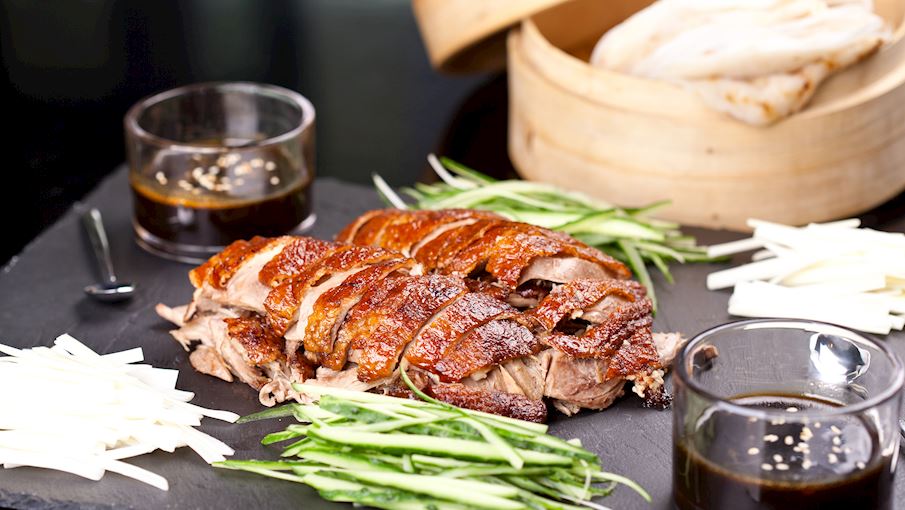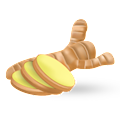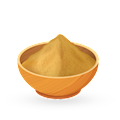MAIN INGREDIENTS
The history of Peking duck goes back to China's Yuan Dynasty of the 13th century. Bianyifang, Beijing's oldest restaurant specializing in Peking duck has been in business since the Jiajing reign of the 16th century, serving as a testament to the popularity of this succulent, tantalizing dish.
The duck is cooked until the skin turns golden and crispy and the meat becomes tender, slightly sweet, and moist. Both the meat and the skin are then folded in thin pancakes or steamed white buns. To make an authentic Beijing kao ya, the duck must be a white feathered American Pekin, hung for 24 hours, and pumped with air through a small puncture between the breasts and wings.
MOST ICONIC Beijing kao ya
View moreMAIN INGREDIENTS
Hangzhou-style duck pickled in soy sauce is a delectable specialty dish of Hangzhou cuisine that delivers the authentic flavors of the region. This dish consists of duck meat cooked in a marinade, and it is then covered with soy sauce and served alongside rice or noodles.
Deliciously crispy on the outside while remaining tender and moist on the inside, the duck is commonly served chilled. This dish is aromatic, predominantly savory, and slightly sweet in flavor. It is traditionally prepared and consumed during the celebration of the Chinese Lunar New Year.
MAIN INGREDIENTS
Zhangcha duck is a duck smoked with tea and camfor, originating from the Chinese province of Sichuan which is famed for its spicy dishes. The preparation of this meal is a five-step process; first, it’s marinated, then boiled, air-dried, smoked, and finally, fried.
When served, pieces of duck meat are topped on gebao — a clam-shaped bun.
MOST ICONIC Zhangcha ya
View moreDuck's head is a spicy local specialty from the Chinese city of Wuhan, but it is also a snack that is commonly eaten throughout China, most notably in Shanghai. The dish is made by stir-frying a head of duck with the addition of herbs and spices.
Duck's head has a crispy taste as a result of the stir-frying method, and it is claimed to be a healthy food, with one of the duck's head store owners claiming that it helps one's brain power when consumed. Some say that the taste of the dish is not unlike eating a spicy chicken wing, while the others, such as Kellie Schmitt of CNN, describe it as one of Shanghai's weirdest foods.
When the head is served, it should be pried open with one's fingers to get to the tender meat on the interior.
Teochew braised duck is a traditional dish from the Chaozhou region of China, especially popular in the Singaporean Teochew community. This dish exemplifies the Teochew culinary style, which emphasizes the preservation of the original flavors of the ingredients and employs techniques like braising and slow cooking.
The duck is cleaned, and its inner cavity might be stuffed with various aromatics or seasonings, depending on the recipe. The primary braising liquid typically consists of a mixture of soy sauce, water, sugar, and a variety of aromatics like star anise, cinnamon, and ginger.
MAIN INGREDIENTS
Ginger duck is a nourishing duck soup infused with strong flavors of ginger and rice wine. It is believed that the dish originated in the Chinese province of Fujian, but today it is mainly associated with Taiwan, where it has become an incredibly popular dish.
In Taiwan, this hot pot classic is usually cooked tableside in large clay pots, and primarily enjoyed as a communal dish shared among a group of people. The essential component of the dish is the pungent rice wine broth, made with duck meat left on the bone.
This traditional Chinese dish is made with old duck meat that is stewed with bamboo shoots, chunks or slices of Chinese ham, rice wine, scallions, ginger slices, and seasonings. The tender duck meat is beautifully complemented by the crunchy bamboo shoots and by the saltiness of the ham.
This soup-like stew is typically served as a nutritious lunch or dinner.
MAIN INGREDIENTS
This centuries-old Chinese soup allegedly acts as an aphrodisiac and is praised for its health benefits. The ingredient responsible for these claims is the Caterpillar fungus which is inserted into duck meat before cooking this hearty soup. The duck is then placed into a large pot with water, aromatic herbs, and seasonings such as scallions, ginger, pepper, and occasionally, cooking wine.
Once cooked, the meat is typically served with rice, while the broth is enjoyed as a tonic.
TasteAtlas food rankings are based on the ratings of the TasteAtlas audience, with a series of mechanisms that recognize real users and that ignore bot, nationalist or local patriotic ratings, and give additional value to the ratings of users that the system recognizes as knowledgeable. TasteAtlas Rankings should not be seen as the final global conclusion about food. Their purpose is to promote excellent local foods, instill pride in traditional dishes, and arouse curiosity about dishes you haven’t tried.








